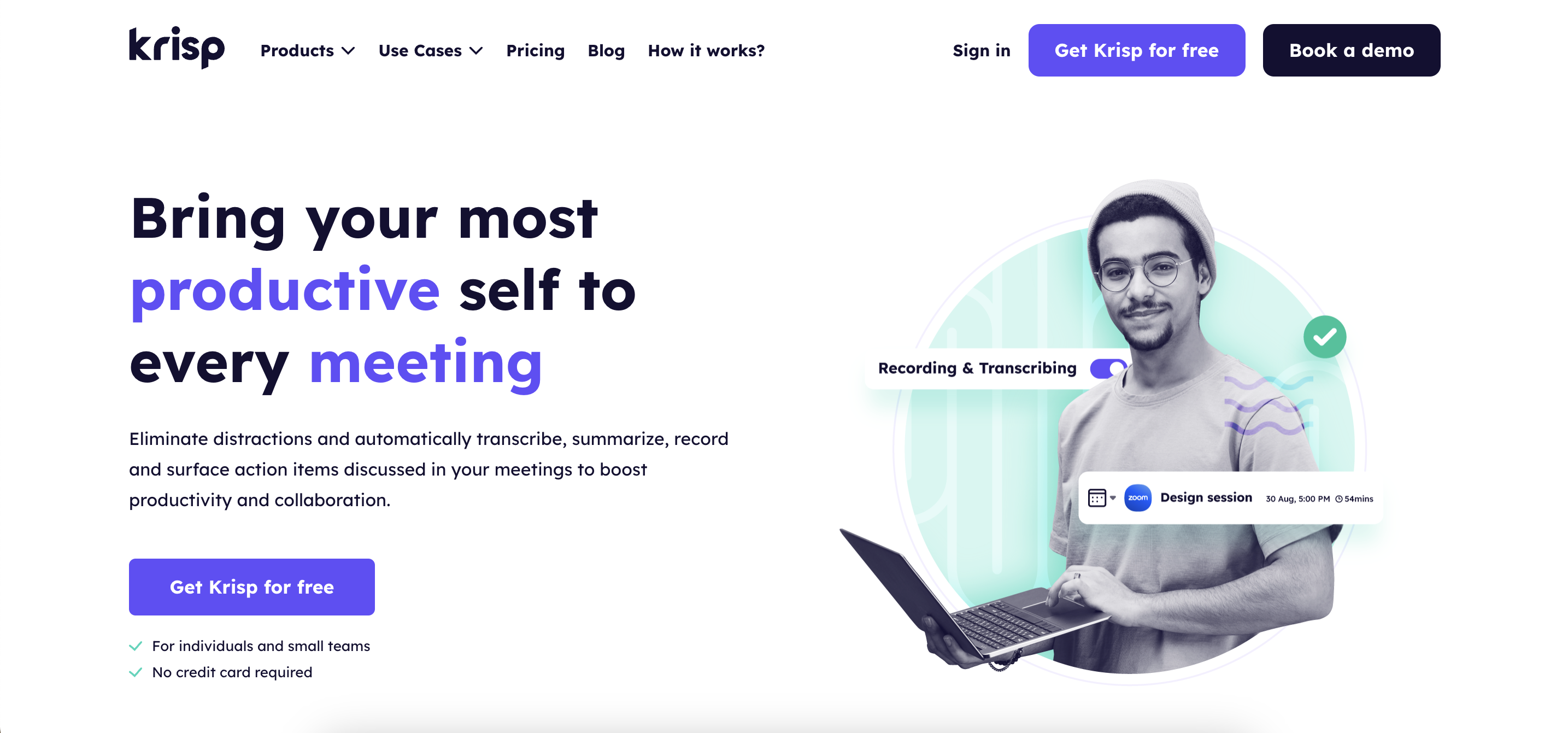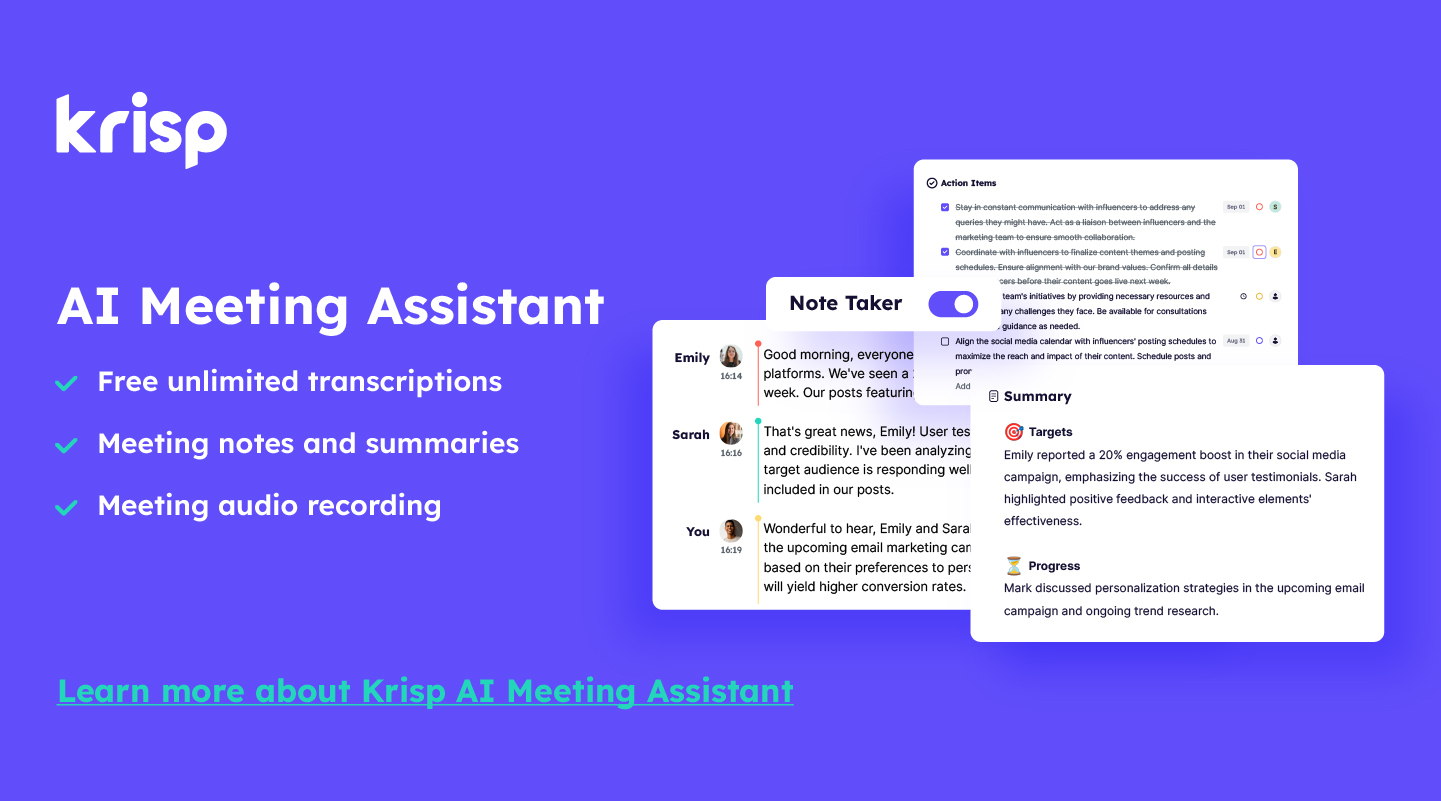Have you ever sat through a meeting that felt like a complete waste of time? Maybe the conversation drifted in too many directions, or people left without a clear idea of what to do next. It’s frustrating, but the real issue isn’t the meeting itself—it’s the lack of well-defined goals. When you set clear meeting goals from the start, everything becomes easier. The discussion stays on track, decisions get made faster, and everyone walks away knowing their next steps. But the key is to use practical methods to define these goals—because vague intentions won’t help. A goal that’s too broad or unclear can still lead to confusion, while a well-structured, actionable one ensures your meeting actually leads to results.
So, instead of overcomplicating things, let’s focus on four practical ways to define your meeting goals. These simple strategies will help you make every meeting more productive, efficient, and worth everyone’s time.
Definition of Meeting Goals
Meeting goals are just what you want to get done by the time the meeting ends. Maybe it’s making a decision, solving a problem, brainstorming ideas, or figuring out next steps for a project. Having clear goals keeps things on track, so meetings don’t turn into long, pointless discussions.
When you know exactly why you’re meeting, people stay focused, conversations make sense, and you actually get things done. Without clear meeting goals, meetings can drag on with no real outcome—just a lot of talking. So, setting simple, practical goals makes a huge difference in making meetings productive and worth everyone’s time.
Benefits of Meeting Goals
Having clear meeting goals makes a huge difference in how productive and useful your meetings turn out. Here’s why they matter:
- Keeps Everyone on Track – When you know what the meeting is about, there’s less rambling and more focus. People stick to the topic instead of going off on random tangents.
- Saves Time – No one likes long, pointless meetings. Clear goals help you get to the point faster, so meetings stay short and effective.
- Makes Decisions Easier – When the goal is clear, people can make informed decisions without second-guessing or wasting time debating things that don’t matter.
- Gives Everyone a Purpose – When people understand why they’re in the meeting, they’re more engaged and ready to contribute instead of just sitting there wondering why they showed up.
- Leads to Real Results – A meeting without goals usually ends with no action. But when there’s a clear purpose, people walk away knowing exactly what needs to happen next.
In short, having solid meeting goals makes sure your meetings actually achieve something instead of just feeling like another time-wasting chat.
4 Practical Ways to Define Your Meeting Goals
Meetings can quickly become long, unfocused, and unproductive if there’s no clear direction. Without a solid plan, conversations go in circles, and people leave feeling confused about what’s next.
The good news? There’s a simple way to fix this. When you define your meeting goals the right way, discussions stay on track, decisions get made faster, and everyone knows exactly what to do afterwards.
So, how do you set the right goals to make meetings more effective? Here are four practical ways to do it.
1. Start with the End in Mind
Before you schedule a meeting, take a moment to think about what you actually want to achieve. If you don’t have a clear goal, the conversation can easily go in circles, and nothing really gets done. Ask yourself: Is this meeting to make a decision, assign tasks, solve a problem, or check progress? When you know the purpose from the start, it’s way easier to keep things on track. Plus, when people understand why they’re there, they come prepared and ready to contribute instead of just sitting there trying to figure things out.
Having a clear goal also sets expectations. If you need a decision to be made, make sure everyone has the right info before the meeting starts. If you’re trying to solve a problem, ask team members to come with ideas or research ahead of time. When everyone knows the goal, the discussion is more productive, and you don’t waste time going over things that could’ve been sorted out beforehand. A little planning upfront saves a lot of time later.
When you start with the end in mind, it’s easier to tell if the meeting was actually useful. Did you make a decision? Did everyone leave knowing what to do next? Or do you need another meeting to clear up what was left hanging? Without a clear goal, meetings can drag on with no real outcome. But when you go in knowing exactly what needs to happen, you keep things focused, productive, and worth everyone’s time.
2. Break Big Goals into Smaller Actionable Points
Big, vague goals can make meetings feel like they’re going nowhere. If you walk into a meeting with a goal like “Improve the project timeline,” people might just keep talking in circles without making real progress. Instead, break it down into smaller, clear action points. Ask: What specific steps do we need to take? For example, instead of a broad goal, try something like “Identify delays, assign responsibilities, and set new deadlines.” When your goal is detailed and actionable, it’s much easier to turn talk into results.
Smaller goals also keep meetings more focused. When a goal is too broad, discussions tend to drift, and people might leave feeling confused about what to do next. But when you outline clear steps, everyone knows exactly what’s expected. Instead of debating vague ideas, the team can focus on solving real problems and making decisions that move things forward. Breaking things down helps avoid unnecessary back-and-forth and keeps the meeting productive.
At the end of the meeting, the goal should feel achievable, not overwhelming. When you take big topics and break them into smaller, manageable tasks, people feel more confident about taking action.
3. Assign Responsibilities Before the Meeting
A meeting without preparation is just a group of people sitting around, throwing out ideas with no real direction. Even if you have a clear goal, things won’t go smoothly if no one comes prepared. That’s why it’s important to assign responsibilities ahead of time so everyone knows what they need to bring to the table. If the meeting requires reports, data, or updates, make sure the right people prepare them in advance. This way, discussions are based on facts rather than guesswork.
When people walk into a meeting knowing exactly what’s expected of them, things move faster and stay on track. Instead of spending half the time looking for missing information or making assumptions, the team can dive straight into problem-solving and decision-making. For example, if the meeting is about budget planning, the finance team should come with updated numbers, and project leads should bring estimates for upcoming expenses. Having the right info on hand makes discussions productive instead of full of “we’ll figure it out later” moments.
Good preparation also helps meetings stay efficient and focused. When responsibilities are clear, people don’t waste time scrambling for details or making vague suggestions. Instead, they contribute meaningful insights, making it easier to reach conclusions and take action. So before you schedule a meeting, send out a quick message assigning roles and setting expectations. A little preparation goes a long way in making meetings worthwhile instead of just another time-waster.
4. Set a Time Limit for Each Goal
Meetings can easily drag on longer than necessary, especially when people get stuck on one topic. Not every discussion needs the same amount of time, so it’s important to set a time limit for each goal to keep things moving. If a decision can be made in 10 minutes, don’t let it turn into a 30-minute debate. Being mindful of time ensures that meetings stay focused and don’t turn into endless back-and-forth discussions.
A good way to do this is by creating a simple agenda with time blocks for each point. For example, if your meeting has three main topics—reviewing a report, assigning tasks, and discussing next steps—decide how much time each one needs. Maybe the report review gets 15 minutes, task assignments get 10, and next steps get 20. Sticking to these limits helps prevent small topics from eating up too much time while making sure important discussions get the attention they need.
How Krisp Helps to Define Meeting Goals?
Defining clear meeting goals is essential for productive discussions, but distractions, miscommunication, and lack of proper documentation can get in the way. Krisp, with its AI-powered meeting assistant, helps teams stay focused, capture important details, and ensure every meeting leads to clear, actionable outcomes. Here’s how Krisp makes it easier to define and achieve meeting goals:
- AI-Powered Note-Taking for Clearer Meeting Objectives: Krisp’s automatic meeting transcription and note-taking feature helps teams keep track of what’s discussed without relying on memory. This means you can set goals before the meeting and ensure discussions stay aligned with them. With structured notes, teams can revisit key points, ensuring that meeting objectives are met and decisions are well-documented.
- Noise-Free Communication for Focused Discussions: Background noise and interruptions can derail conversations and make it harder to stay focused on the meeting’s goals. Krisp’s noise cancellation and voice enhancement technology keeps discussions clear, helping participants stay engaged and on-topic. This ensures that meetings don’t drift into unrelated conversations and that everyone remains aligned with the agenda.
- Actionable Summaries for Goal Tracking: After every meeting, Krisp provides AI-generated summaries and action items, helping teams track progress and stick to their original meeting goals. Instead of scrambling to remember decisions or next steps, participants receive a structured recap, making follow-ups and execution much easier.
FAQ
1. Meeting Objective – A clear statement of the meeting’s purpose.
2. Agenda Items – A prioritized list of discussion topics.
3. Time Allocations – Estimated time for each topic to ensure efficiency.
4. Assigned Roles – Indicating who leads discussions or presents information.
5. Action Items & Next Steps – A summary of decisions and assigned follow-ups.
Specific (finalizing the timeline)
Measurable (assigning deadlines and responsibilities)
Achievable (realistic within 30 minutes)
Relevant (directly impacts project success)
Time-bound (completed by the meeting’s end).



